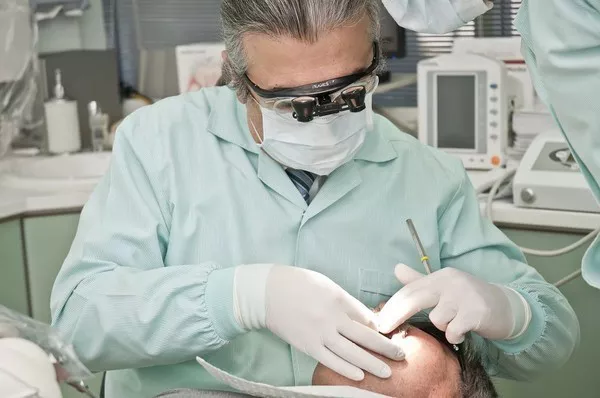In the quest for optimal oral health, the presence of periodontitis can be a formidable challenge. This inflammatory condition, affecting the tissues surrounding the teeth, demands a comprehensive approach for effective management and potential cure. In this article, we delve into the depths of periodontitis and explore various treatment options, shedding light on the possibility of finding a cure for this prevalent oral health concern.
1. Understanding the Roots: What Causes Periodontitis?
Before embarking on the journey to find a cure, it is imperative to understand the roots of periodontitis. Poor oral hygiene, bacterial plaque buildup, and genetic predispositions are among the key factors contributing to the onset and progression of this gum disease.
a. Poor Oral Hygiene Habits
The cornerstone of periodontitis prevention lies in maintaining impeccable oral hygiene habits. Neglecting regular brushing, flossing, and professional dental cleanings can create a breeding ground for harmful bacteria, paving the way for periodontal issues.
b. Bacterial Plaque: The Silent Culprit
Bacterial plaque, a sticky film of bacteria that forms on teeth, is a major player in the development of periodontitis. When left unaddressed, plaque hardens into tartar, triggering an inflammatory response that damages the gums and supporting structures of the teeth.
2. The Pursuit of a Cure: Current Treatment Options
While a definitive cure for periodontitis remains elusive, advancements in dental science have provided a range of effective treatment options to manage and mitigate its impact.
a. Non-Surgical Periodontal Therapy
Non-surgical interventions, such as scaling and root planing, serve as the frontline defense against periodontitis. These procedures aim to remove plaque and tartar, promoting healing of the affected gum tissues.
b. Antibiotics and Medications
In cases where infection plays a prominent role, antibiotics may be prescribed to combat bacterial activity. Additionally, antimicrobial mouthwashes can be incorporated into oral care routines to help control the microbial environment within the mouth.
c. Surgical Interventions
For advanced cases of periodontitis, surgical interventions may be necessary. Procedures like flap surgery and bone grafting aim to repair and regenerate damaged tissues, restoring a healthier oral environment.
3. Harnessing the Power of Preventive Measures
Prevention, as the adage goes, is better than cure. When it comes to periodontitis, adopting proactive measures is pivotal in averting its onset and progression.
a. Regular Dental Check-ups
Scheduled dental check-ups allow for early detection of potential issues, enabling prompt intervention and preventing the escalation of periodontal problems.
b. Embracing a Healthy Lifestyle
A holistic approach to oral health involves maintaining a well-balanced diet, staying hydrated, and avoiding detrimental habits such as smoking. These lifestyle choices can positively impact gum health and contribute to preventing periodontitis.
c. Education and Awareness
Empowering individuals with knowledge about the importance of oral hygiene and the consequences of neglecting it is crucial. Educational initiatives can play a pivotal role in reducing the prevalence of periodontitis.
4. Emerging Trends in Periodontitis Research
The landscape of periodontitis research is ever-evolving, with scientists exploring innovative avenues to uncover potential cures and groundbreaking treatment modalities.
a. Stem Cell Therapy
Research in the realm of regenerative medicine has shown promise in utilizing stem cells for tissue repair. Stem cell therapy holds potential for regenerating damaged gum tissues, presenting a hopeful avenue for future periodontitis treatment.
b. Microbiome Analysis
Advancements in microbiome analysis are shedding light on the intricate relationship between oral bacteria and periodontitis. Understanding the oral microbiome dynamics may pave the way for personalized treatment approaches tailored to individual microbial profiles.
5. Collaborative Efforts for a Periodontitis-Free Future
The multifaceted nature of periodontitis necessitates collaborative efforts between individuals, healthcare professionals, and researchers to create a future where this oral health concern is effectively addressed.
a. Patient-Centric Approach
Encouraging patients to actively participate in their oral health journey is paramount. Educating individuals about the importance of consistent oral care practices empowers them to be proactive in preventing and managing periodontitis.
b. Research and Development Initiatives
Supporting research initiatives focused on periodontitis is essential for unlocking new discoveries and potential cures. Collaborations between dental professionals, researchers, and pharmaceutical companies can accelerate progress in the field.
In conclusion, while a definitive cure for periodontitis may be on the horizon, the current arsenal of treatment options and preventive measures offers hope for individuals grappling with this common oral health challenge. By understanding the causes, embracing preventive strategies, and supporting ongoing research, we can collectively strive towards a periodontitis-free future, where optimal oral health is within everyone’s reach.
Related Links:
What causes gum pain and swelling?
What does a gum graft look like while healing?
What is the first sign of gum disease?































